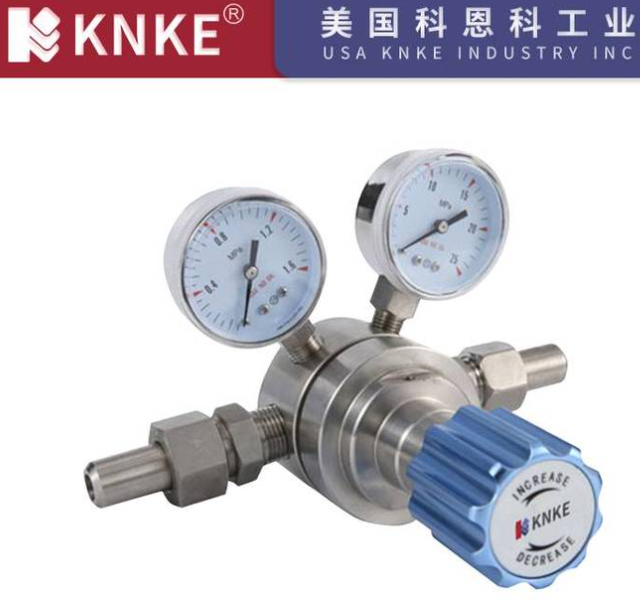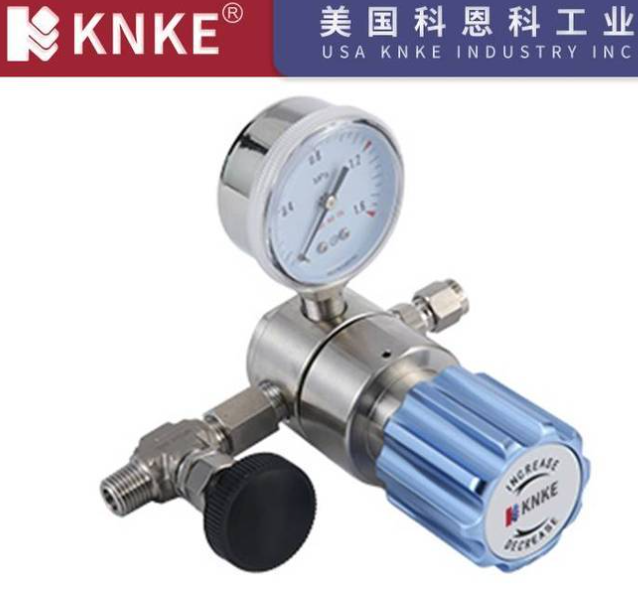What Is a Pressure Reducing Valve? Functions, Types, and Applications Explained
In both industrial production and everyday life, controlling fluid pressure is of paramount importance. Whether it’s ensuring reliable water supply in high-rise buildings, enabling the smooth operation of pneumatic equipment in factories, or providing safe gas delivery to kitchen stoves, a crucial device plays a behind-the-scenes role — the pressure reducing valve (PRV). This seemingly unremarkable component acts as a “pressure guardian,” ensuring the safe and stable operation of fluid systems with its precise pressure regulation capabilities.

I. Core Mission: Pressure Reduction and Stabilization — The Foundation of System Reliability
The primary function of a PRV is to reduce upstream high-pressure fluid to the rated pressure required by downstream equipment and to maintain that pressure consistently. In municipal water supply systems, for instance, the pressure in the city’s main pipeline is often too high for direct distribution. Excessive pressure can damage low-level pipelines, while upper-floor users may suffer from insufficient water flow. A PRV, with its internal pressure-sensing and regulating mechanism, automatically adjusts high-pressure flow to a stable value (e.g., 0.3–0.5 MPa), ensuring consistent water pressure regardless of upstream fluctuations.
In industrial settings, equipment such as pneumatic actuators and hydraulic systems demand stable supply pressures. A PRV acts like a voltage stabilizer for pressure, reducing fluctuating high-pressure outputs from compressors (e.g., 0.8 MPa) to the steady working pressure required by machinery (e.g., 0.4 MPa). This pressure consistency is essential for maintaining control accuracy and preventing equipment damage in automated production lines and precision instruments.
II. Safety Barrier: Preventing Overpressure Risks and Protecting Systems

Beyond stabilizing pressure, PRVs also serve as a vital safety barrier. In high-pressure systems, sudden pressure surges can severely damage pipelines, valves, and equipment. A PRV quickly responds to such spikes, limiting downstream pressure within safe boundaries and preventing accidents like leaks, bursts, or explosions.
Consider a liquefied petroleum gas (LPG) cylinder: internal gas pressure can soar above 1.5 MPa on hot summer days, far exceeding the safe operating pressure of a typical gas stove (about 0.03 MPa). A gas PRV reduces this pressure through a spring-and-diaphragm mechanism, ensuring safe delivery to the stove. In the event of blockages or malfunctions, it can also cut off or limit gas flow to prevent leaks or combustion hazards. In high-rise buildings, PRVs in fire suppression systems reduce high-pressure water from pumps (e.g., 1.6 MPa) to pressures suitable for hydrants (e.g., 0.6 MPa), ensuring both safety and firefighting effectiveness.
III. Diverse Types: Different Designs for Precise Pressure Control
To meet varying operational needs, PRVs come in several types, each with distinct structures and application scenarios:
- Direct-Acting PRVs: Simple in design, these valves rely on the balance between spring force and the downstream fluid pressure acting on a diaphragm. As downstream pressure increases, the diaphragm compresses the spring, reducing valve opening and flow, thereby stabilizing pressure. These valves are ideal for low-pressure (≤1.6 MPa), low-flow (≤50 m³/h) applications such as household water systems and small pneumatic tools.
- Pilot-Operated PRVs: Comprising a main valve and a pilot valve, this design enables the pilot valve to sense pressure changes and control the main valve accordingly. The pilot valve’s amplifying effect allows for fast response and high precision (±1% FS), making these suitable for high-pressure (≥2.5 MPa), high-flow (≥100 m³/h) industrial processes such as chemical pipelines and large hydraulic systems.
- Two-Stage PRVs: Featuring a two-stage reduction process — coarse adjustment followed by fine regulation — these are used when extremely stable output pressure is required. Common in laboratory gas supply systems or precision instruments, this design effectively suppresses pressure fluctuations.
IV. Broad Applications: From Industry to Daily Life
PRVs are used across a wide range of scenarios involving fluid pressure regulation:
- Industrial Applications: Provide stable pressure to actuators, solenoid valves, and cylinders in pneumatic systems; regulate hydraulic pressure in machinery; ensure safe step-down pressure for high-temperature and high-pressure fluids in chemical processes.
- Residential and Public Utilities: Reduce municipal water pressure to levels suitable for domestic appliances like water heaters and washing machines; ensure safe gas supply for stoves and boilers; balance vertical water distribution in tall buildings, preventing pressure imbalance between floors.
- Specialized Fields: In aerospace, PRVs regulate hydraulic and fuel systems on aircraft; in clean energy sectors, they manage pressure in hydrogen storage systems for fuel cell vehicles; in healthcare, they supply stable gas pressure to anesthesia machines and ventilators.
V. Selection and Maintenance: Ensuring Optimal PRV Performance
Selecting the right PRV involves three key considerations:
- Pressure range and regulation accuracy — Choose the appropriate type (direct-acting, pilot-operated, or two-stage) based on the required outlet pressure and stability.
- Flow rate — Select a valve with the right orifice size to handle the system’s maximum flow.
- Fluid characteristics — Consider temperature, corrosiveness, and cleanliness to choose proper valve materials (e.g., brass, stainless steel, engineering plastics) and sealing technologies.
Maintenance is equally crucial. Periodically check the PRV’s sealing performance, spring elasticity, and diaphragm integrity. For pilot-operated types, clean the internal components to avoid blockages that could impair control accuracy. If pressure anomalies occur, inspect for valve sticking, spring failure, or calibration issues — and repair or replace as needed.
From ensuring gas safety in kitchens to maintaining pressure stability in industrial automation, PRVs play a vital role in every fluid system. As technology advances, intelligent and high-precision PRVs are emerging, poised to play even more significant roles across diverse applications. Understanding how PRVs function and where they are used is essential not only for engineers but also for everyday users aiming to ensure safe, efficient pressure control.
